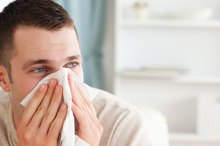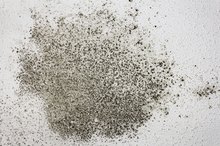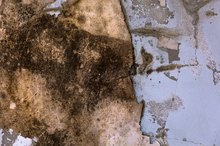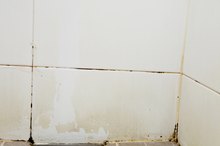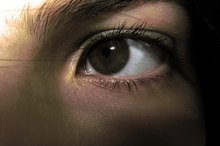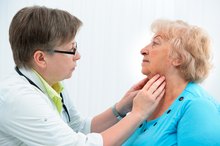What does fact checked mean?
At Healthfully, we strive to deliver objective content that is accurate and up-to-date. Our team periodically reviews articles in order to ensure content quality. The sources cited below consist of evidence from peer-reviewed journals, prominent medical organizations, academic associations, and government data.
- Centers for Disease Control and Prevention: Facts about Stachybotrys chartarum and Other Molds
- "Allergy"; Symptoms After Mold Exposure Including Stachybotrys chartarum, and Comparison with Darkroom Disease; Al-Ahmad, Manno & Ng; February 2010
- "Allergy"; Symptoms After Mold Exposure Including Stachybotrys chartarum, and Comparison with Darkroom Disease; Al-Ahmad, Manno & Ng; February 2010
The information contained on this site is for informational purposes only, and should not be used as a substitute for the advice of a professional health care provider. Please check with the appropriate physician regarding health questions and concerns. Although we strive to deliver accurate and up-to-date information, no guarantee to that effect is made.
Diseases Caused by Black Toxic Mold
There are two types of black mold: Stachybotrys and Aspergillus niger. Both produce mycotoxins that are poisonous to the human body. Physicians have identified several illnesses that may result when the mold spores are inhaled or come in contact with the skin. Some people are more sensitive to mold than others, but the development of diseases from black mold is not dependent upon being sensitive or allergic to mold.
If you are experiencing serious medical symptoms, seek emergency treatment immediately.
Allergy
According to the Centers for Disease Control and Prevention, exposure to mold does not always present a health problem 1. However, black mold carries toxins that will adversely affect the health of all people who breathe in the spores or who come in contact with the mold. Allergy-type symptoms in people who have not been diagnosed with allergies are common, and include nasal stuffiness, eye irritation, coughing and dermatitis.
- According to the Centers for Disease Control and Prevention, exposure to mold does not always present a health problem 1.
Asthma
Physical Symptoms of Mold Illness
Learn More
According to the Cleveland Clinic, the degree of health concern from black mold exposure will depend on the length of exposure and your sensitivity to mold. If you are highly sensitive, you could have more severe reactions more quickly than someone who is not highly sensitive. Asthma-type symptoms--wheezing, coughing and shortness of breath--are common even if you have never been diagnosed with asthma before. In a study published in the February 2010 issue of the journal "Allergy," researchers found that persons exposed to Stachybotrys black mold who developed asthma-type symptoms continued to exhibit those symptoms for at least three years after the initial exposure to the mold 2. This appeared to indicate to the researchers that the lung damage caused by black mold was not short term.
- According to the Cleveland Clinic, the degree of health concern from black mold exposure will depend on the length of exposure and your sensitivity to mold.
Fungal Infections
The Missouri Department of Health and Senior Services warns their elderly population of the risk for fungal lung infections after exposure to Aspergillus. If you have an underlying medical condition that affects your lungs, such as chronic obstructive pulmonary disease (COPD) or lung cancer, you can also develop a potentially fatal fungal infection in your lungs. If your immune system has been compromised, such as with AIDS, you are also more susceptible to hypersensitivity pneumonitis.
- The Missouri Department of Health and Senior Services warns their elderly population of the risk for fungal lung infections after exposure to Aspergillus.
- If you have an underlying medical condition that affects your lungs, such as chronic obstructive pulmonary disease (COPD) or lung cancer, you can also develop a potentially fatal fungal infection in your lungs.
Other Diseases
Diseases Linked to Black Mold
Learn More
Black mold has been loosely associated with the development of diseases that affect many of your bodily systems. These include:
- infertility
- brain tumors
- stroke
- cancer
- immune disease
- seizures
- fever
- memory loss
- balance issues
- acid reflux
- multiple chemical sensitivities
However, according to the American Society for Microbiology, there is no clinically established relevant link between these diseases and exposure to black mold.
Related Articles
References
- Centers for Disease Control and Prevention: Facts about Stachybotrys chartarum and Other Molds
- "Allergy"; Symptoms After Mold Exposure Including Stachybotrys chartarum, and Comparison with Darkroom Disease; Al-Ahmad, Manno & Ng; February 2010
- American Society of Microbiology; Indoor Mold, Toxigenic Fungi, and Stachybotrys chartarum: Infectious Disease Perspective
- Amirhosein Ghaffarianhoseini, Husam AlWaer, Hossein Omrany, Ali Ghaffarianhoseini, Chaham Alalouch, Derek Clements-Croome & John Tookey (2018) Sick building syndrome: are we doing enough?. Architectural Science Review,61:3, 99-121.
- American College of Allergy, Asthma & Immunology. Mold Allergy. Reviewed April 23, 2018.
- Centers for Disease Control and Prevention. Fungal Diseases. Reviewed May 6, 2019.
- Centers for Disease Control and Prevention. Mold. Basic Facts. Reviewed December 20, 2017
- Asthma and Allergy Foundation of America. Mold Allergy. Reviewed October 2015.
- Centers for Disease Control and Prevention. Molds in the Environment. Rreviewed December 20, 2017.
- Asthma and Allergy Foundation of America, Mold Allergy
- Centers for Disease Control and Prevention (CDC), Mold, Basic Facts
- Rudert A, Portnoy J.Mold allergy: is it real and what do we do about it?Expert Rev Clin Immunol. 2017 Aug;13(8):823-835. doi: 10.1080/1744666X.2017.1324298. Epub 2017 May 17.
Writer Bio
Gail Morris has been writing extensively since 1997. She completed a master's degree in nursing at Indiana University-Purdue University Indianapolis and practiced in medicine for more than 20 years. Morris has published medical articles in peer-reviewed journals and now writes for various online publications and freelances for Internet marketers.
